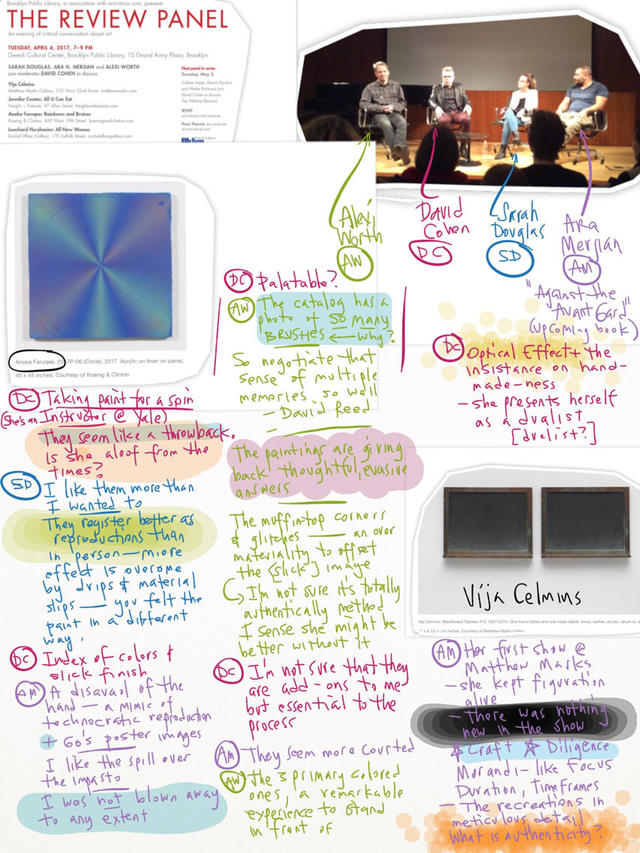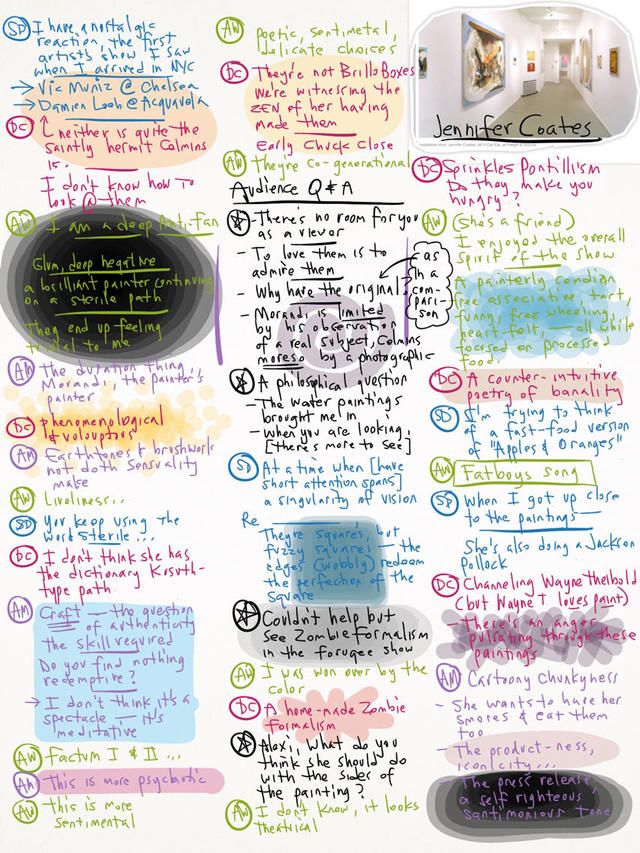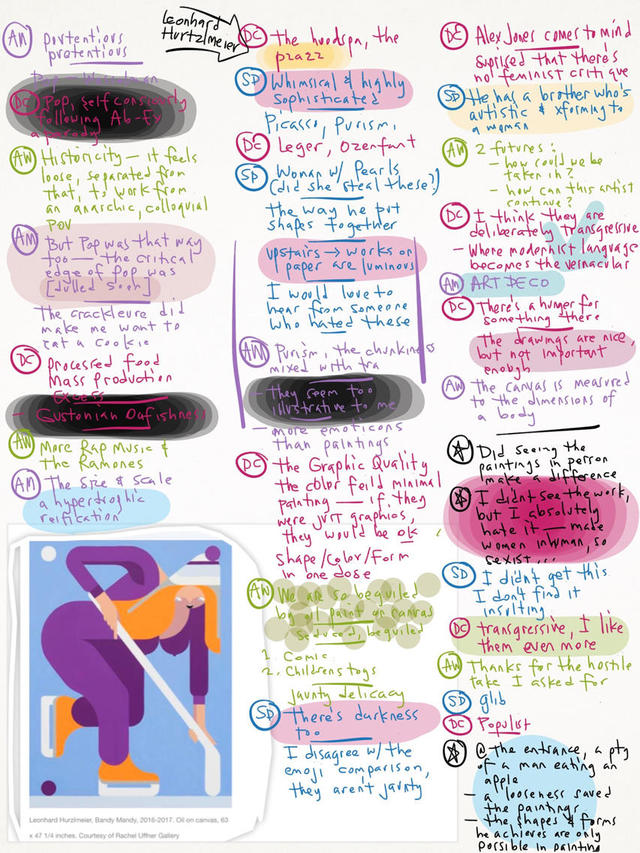April 14, 2017
Review Panel
Reading some text recently, I came across a word I didn't understand, so I had to look it up. (The source might have been this one, but I haven't been able to recover it again there with a quick search. Oh well.) It was one of those words that I thought I wouldn't use even though I'm prone to salt my language with a vocabulary that is probably too rich for the average person. I've seen folks shift uncomfortably from time to time, as I drop certain terms that are probably more precious to me than them. I probably sound pretentious but I usually don't care. I credit the influence of my Filipino grandfather who was a lawyer and had a superior command of english that he was particularly proud of. I'll use a word no matter its' provenance if it rings true to the subject, if I calculate that it makes what I'm saying vivid. But this particular word seemed over the top, and I thought it was the kind I'd never have to use, so exotic or antiquated or overrefined it seemed.
That is what I had thought until it came time to post my notes for artcritical's April 4, 2017 Review Panel, hosted by David Cohen last week at the Dweck Cultural Center at the Brooklyn Public Library. I had let so much time pass in the reportage of it in this blog of that evening's critique that I felt compelled to write a short introduction and try to characterize what happened so as to compensate in this small way for the lag time.
As I thought of how to characterize what happened, I thought of that word. It's kind of funny, I thought I would never have to use it. The word is heteroclite. Heteroclite means abnormal or irregular. The selection of shows covered in this particular Review Panel was heteroclitic, compared to past critiques. There you go. I said -or wrote- it. Please don't don't think badly of me.
Past Review Panels seemed to select the exhibitions to be critiqued with a kind of logic or design. Conceptualist vs formalist. Sex. Race. This Review Panel is heteroclitic because it was irregular, not normal to a pattern, any pattern seemingly established in recent events. It was peculiar in that it defied any order or motif or structure. That is, unless not having a pattern is the pattern.
Checking my assumption: the line up was nearly all women... but it's not completely a group of women. The dice that throws three women and a man foils a feminist theme. The exception in question is Leonhard Hurzlmeier, who apparently paints only women. Could he possibly qualify as a "woman"??? Can an artists' subject be their own avatar? Perhaps it was the loud vocal protest and condemnation by a feminist sitting in the audience next to me that ruined that perception. She angrily detected a sign of salaciousness in the preoccupations of the artist and she also seemed indignant that identity lanes should not be crossed. There was no pushback from the moderator. No, this spoils any apperception of a feminist grouping.
The heteroclitic assortment in the group:1) slick, no visible hand, geometric, squared away, hypnotic, factured, spin paintings...
2) mediated, severe, almost neurotic verisimilitude by a legacy artist...
3) Pop, oral fixated, sloppy seconds paintings...
4) a surprising Deco figuration of curvy women whose color calibrations were performed with strict Germanic fastidousness down to a two-three decimal fraction of millimeters.
See a pattern here?
No, I don't either.
***
Anoka Faruqee at Koenig & Clinton Gallery
Vija Clemens at Matthew Marks Gallery
Jennifer Coates at Freight + Volume Gallery
Leonhard Hurzlmeier at Rachel Uffner Gallery
April 13, 2017
Post Analog to r/place
I'm thinking about the group show at The Hole, Post Analog Painting II. While the press release reads more intelligently than the paintings collectively in the exhibition, the show does a great job showcasing the preoccupations of young artists who are reflecting the early stages of our information age. Despite the vaunted promise of forecasting, my thoughts kept insistently indexing the recent past as I looked over the sprawling show. Great skills are in abundance to be sure (masking, spray paint, precision), but I kept thinking about the Chicago School of Ed Pashke and Peter Saul... of more recent -but still past- Vaporware and Simpsonwave... of the artists in NYC who made art about the dawning digital epoch back in the late 90's. Compare this, in contrast to thoughts that I had as I toured DIA Beacon: that the conceptualists surrounding Sol LeWitt were clairvoyant in that they anticipated an information age that wouldn't dawn for decades to come.
Perhaps this inversion/introversion stems from the navel gazing quality of the curation and the thinking of the (...generation of?) the artists involved. The very act of reflecting the digital into the analog does this a la vez. A feedback loop and infinite recursion. Flowing qualities of the discrete back into the continuously variable might have a tendency to rob the digital of the attributes that could have ported in all that weird quantum stuff: superposition, spooky action at a distance, the both/and of time/space - particle/wave, the simultaneity of the alive/dead-ness of Schrödinger's Cat, the slipperiness of identity.
Art has always had the ambition of erasing the boundary between it and life. The trouble comes when the pursuit of "the Now" short circuits the second sight of what is just beyond our horizon. When you compare art directly to life, life always wins. That's why art needs the boundary (frame) redrawn immediately after it's enlarged and erased. As an example of how life wins, witness the recent phenomena of Reddit's April Fool's Day adventure called r/place (videos below). Here's a link to a large file of the finished image for your perusal.
April 11, 2017
Where is the love?
(A letter recently sent to a friend.)
Hi XXX,
Just read this article about the malaise in the art world / art market. It reflects what we've been talking about over the years, but it's somewhat unconscious about the cause. I'm about to scribble something about for the blog, but I had to fire this mark up of it and send it to you. I bolded, colored red and underlined the alarming parts.
My preoccupations:
-That art's value comes from two places:-an art work's extrinsic ($) value stems from the intrinsic interest that caused it to be made (not $)
-the collector's unwillingness to part with itTherefore, a collector who is preoccupied with liquidity has unwittingly devalued the art he or she is collecting.
-The art world has swollen so much in size that I suspect that the amount of real talent or genius or insight has either remained the same as it was when it was small... or worse, this pool might have shrunk.
-Art is not an industry, it is a calling, for both the artist and collector (and everyone in between). To regard it as an industry is to cause a fallout of the prime motivation: love. We have therefore a loveless and soulless art world all around. And so we have the art world in the condition it is in today.
-Dennis
***
PS: I've really marked up Reyburn's article. Words and sentences bolded, italicized, fonts made red. I've also added commentary in blue, left margin justified. For as much as I've kvetched, credit goes to him for writing such a provocative piece.
***
The article is below the fold:
-What Next?' an Uncertain Art World Asks, Sticking to Proven BrandsBy SCOTT REYBURN APRIL 7, 2017
LONDON -- The art market is almost as old as art itself. But it's only in the last decade or so, with increased globalization, digitization and the rise of art as a multibillion-dollar investment vehicle, that the market has been viewed as an industry. And where there is industry, conferences are sure to follow.
Remember: the art world is not the art market. That is another creature altogether. Call it an epiphenomenon. Artists may or may not be industrious, but anyone who makes objects solely for the purpose of selling them and not for the intrinsic love of art is not an artist. Call this stolen valor. Call this a sham. The repetition of the term "industry" in this article irritates me to no end.
On Tuesday, the inaugural New York edition of the Art Business Conference was held at the Time Warner Center. Aimed at "senior art market professionals," the event sold 240 tickets, priced at $275 to $500, to representatives of more than 140 organizations."It's a pause-for-thought day about where the industry is at," said Louise Hamlin, the British-born organizer of the conference, whose company, Art Market Minds, has been holding similar events in London since 2014. Until recently, art was one of few industries without an annual conference in the United States, she added.
The audience soon learned that this is an industry that is troubled -- at least in the West -- by a sense of uncertainty. Britain, one of the world's largest art markets, is leaving the European Union; auction sales were down in 2016; and established contemporary galleries such as Andrea Rosen in New York and Vilma Gold and IBID in London are closing, as is a Christie's salesroom in the British capital.
In a session on the challenges of running art businesses in London and New York, the British dealer John Martin spoke of soaring rental bills (in the case of his gallery, totaling 250,000 pounds, or about $310,000, a year) and highly popular fairs threatening the existence of smaller galleries.
Co-incidentally, it was the preceding century of prosperity that brought about the slow gentrification of cities and the urban arbitrage over time that set the scene for environments where low real estate prices enabled artists to settle in close proximity to collectors wealthy and interested in art. Artists need cheap rent in order to find the time and space needed to make art. Alas, artists were and are the vanguard for forces that eventually displace them, At first, it is the velocity of this force that is remarkable. Later, it is the acceleration that surprises.
The New York art adviser Lisa Schiff talked about how the "numbing saturation" of the art world and the pressures of globalization had created an "impasse" in today's market."It's an endless cycle," Ms. Schiff said, referring to this year's ever-more-crowded calendar of art fairs, exhibitions and other events. "There's simply too much now. I want to shut off the noise."
The spring and summer are shaping up to be exceptionally "noisy." A Mediterranean offshoot of the quinquennial Documenta survey opens on Saturday in Athens, and Damien Hirst makes a comeback on Sunday with "Treasures From the Wreck of the Unbelievable" in Venice. The 57th Venice Biennale opens next month, followed by bellwether auctions in New York, the Art Basel fair in Switzerland in June, and additional auctions and fairs in London.
It remains to be seen how much a new desire among contemporary artists and curators to engage with political issues at events such as Documenta will percolate to the commercial realm. A hand-carved marble refugee tent pitched near the Acropolis by the Canadian artist Rebecca Belmore remains a world away from the investment-grade art of auctions and art fairs.
A hand carved marble refugee tent pitched near the Acropolis? Doesn't this smell like an object created so that it might be destined to reside in the home of a virtue signaling billionaire? Why else would there be a vague yearning in the words "...remains a world away... investment-grade..."?
Marta Gnyp, an art adviser and writer based in Berlin, has, like many people in the art world, noted how conservative the tastes of collectors have become in these uncertain times. "Collectors are looking for the new, but it doesn't necessarily mean young," said Ms. Gnyp, who was scheduled to present a paper on Friday on the burgeoning market for works by older or deceased female artists at the 43rd conference of the Association of Art Historians in Loughborough, England.
Ms. Gnyp pointed to a "long and growing" list of artists from once-marginalized groups who are now making an impact in the market. Last month, for example, Sotheby's achieved an auction high for the American artist Pat Steir (born in 1940), with the sale for £680,750 of the 1993 painting "Four Yellow/Red Negative Waterfall." Influenced by minimalism and Buddhism, Ms. Steir's "Waterfall" paintings were the subject of a solo show in November at Dominique Lévy in London. "Galleries can present them as a discovery, but at the same time, a safe buy with the potential to grow financially," added Ms. Gnyp, who also cited the artists Mira Schendel (Hauser & Wirth), Carmen Herrera (Lisson Gallery) and Dora Maurer (White Cube). "People think young art is risky."
Risk. This word only makes sense when coupled with "investment-grade". After years of being mystified by the world of investing and money management, I've come to the hard won common sense conclusion that the best way to do it is to invest in the S&P index when one is relatively young, and to leave the investments alone for 30-40 years before thinking about cashing out. Investments in specific stocks makes sense only after a prolonged study and gain of intimate knowledge of a specific business in the... industry.
Art should be bought for the intrinsic love of it and for no other reason. It is only when first the love is great that later could it possibly achieve an extrinsic value in the marketplace. The unwillingness to part with something gives it a value that is superior to mere money... until a sum of money is ultimately proffered that might overcome that level of love. The art "industry" should be spoken only in terms of love, especially at the level of "young art". The greater the intrinsic value, the greater the extrinsic value.
By the way, "young art"? Mira Schendel died at 69. Carmen Herrera is 102. Dora Maurer is 80.
The market's reliance on the tried and trusted was highlighted last month when the Art Basel and UBS Art Market report showed that works by roughly 48,380 artists were sold at auction in 2016. Almost half the total value of the sales came from just 1 percent of those artists. Moreover, works that sold for more than $1 million accounted for 48 percent of the auction market's value, while representing less than 1 percent of the transactions.Today's collectors concentrate their buying on a limited number of 20th- and 21st-century names, from a small number of international auction houses and galleries. That everyone is essentially buying the same thing pushes up prices, reinforcing the sense that doing so is a good investment.
Doug Woodham, a former executive at Christie's and McKinsey & Company whose book "Art Collecting Today" was published on Tuesday, calls this process "homogenization."
I wouldn't call this homogenization in regards to the concentration of elite collectors at a handful of auction houses. A better term would be refinement, not as in purification but as in processing. The distillation of value at that level of the art market is a foregone conclusion.
The larger question of the grasp of value at the direction of emerging art has been put in the jeopardy of a homogenized vapidity due to the ballooning population of the art world and the spread of information in the era of the internet. There have been too many art schools churning out too many artists too easily, too many galleries with everybody wanting the same kind of success, adapting their thoughts and behavior in concert via social media, blending and directing their will toward a collectively accepted idea of stardom. This, is homogenization.
David Salle asked his symposium panelists at the recent Armory Live talks about the their thoughts about the influence of the idea of a world sans hierarchy in the postmodern dialog. This is proof enough that some in the art world are wary of the hazards of the blending of distinctions. Popular themes of uncritical homogenization, plus the spread of the information age has flattened the perception of value in our time, trending to the equalization of all artists below the threshold of the already established legacy names traded successfully in the auction houses. To the contrary, depths do exist somewhere in the spreading delta of our time. We have but to plumb the depths to find it.
But first, we have to believe in the reality of depth in order to do this.
"It's a reflection of new people who want to buy a sure thing," said Mr. Woodham, a New York collector and wealth manager who left Christie's in 2015. "Art is so expensive now, and they are concerned about liquidity. If you buy a known name, you have a better chance to sell. It also reflects the prevalence of art advisers, and of the networked nature of the art economy."
Mr. Woodham's book contains startling information about the number of people in the market for the world's most expensive art. It was based on notes taken in 2015 by an unidentified collector, whom senior specialists at Sotheby's and Christie's tried to persuade to sell paintings by Picasso and by Warhol. They told the collector that about 140 people worldwide had the desire and means to spend $50 million or more on a work of art, that there were perhaps 300 potential bidders for pieces valued at more than $20 million, and about 1,000 for works worth more than $5 million.
What we've seen in recent decades is the disappearance of the middle market in the art world. Investors, who should instead be collectors cum custodians, want their art to be fungible, investment-grade. So they look for a way to buy low and sell high. Emerging artists -kids, ears wet from art school, want to be overnight superstars. They want to respond to the demands of the marketplace. A select few sell out of their graduate studios for four figures and the bubble inflates and inflates... then deflates for most of them when the market realizes that they no longer believe in originality and can only create echoes of past achievement. Young artists' careers end up in tatters and the investors' collection, a worthless heap occupying storage space in expensive real estate.
This is the world we've built.
There were 124,000 people worth at least $50 million in 2015, according to data compiled by Credit Suisse.For all the Sotheby's and Christie's talk of global wealth coming into the market, buying art remains a niche activity.
The New York art industry conference might have left its audience with a sense of "What next?", but in reality, the top end of the sector, particularly at auction, increasingly resembles a washing machine. A few things are added to the load -- a Njideka Akunyili Crosby here, a Wolfgang Tillmans there -- but the same basket of major art brands, such as Warhol, Jean-Michel Basquiat, Gerhard Richter, Lucio Fontana, and Christopher Wool, keep circulating in that "endless cycle," generating more or less financial froth from that 1 percent of the 0.1 percent. "The worldwide art scene has agreed these are good artists," said Jean Minguet, an art market analyst at the French auctions database Artprice. "These are safe investments. It's getting kind of boring."
But that is the nature of industry. It's all about global brands.
That last sentence is quite a shrug. One would think that global branding is boring, too. Artists preoccupied with branding is sooo 90's.
Let's trade out the idea of safe investments with passionate collections. My friend referred to real art collecting as an illness, to gather up things past reason or practicality. To buy more art than you can hang on the walls of your home. To show only your closest friends those things you've found and are honored to be a custodian for your lifetime. Love can be like an illness, to be lovesick. To be head over heels. To be made mad by love.
***
Postscript: I can't help myself. I have to tag the song for my peace of mind:
April 10, 2017
its' only restraint
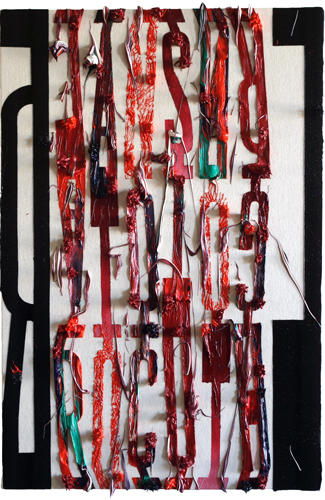
its' only restraint
2017
#542
30"x20"
Oil on Canvas
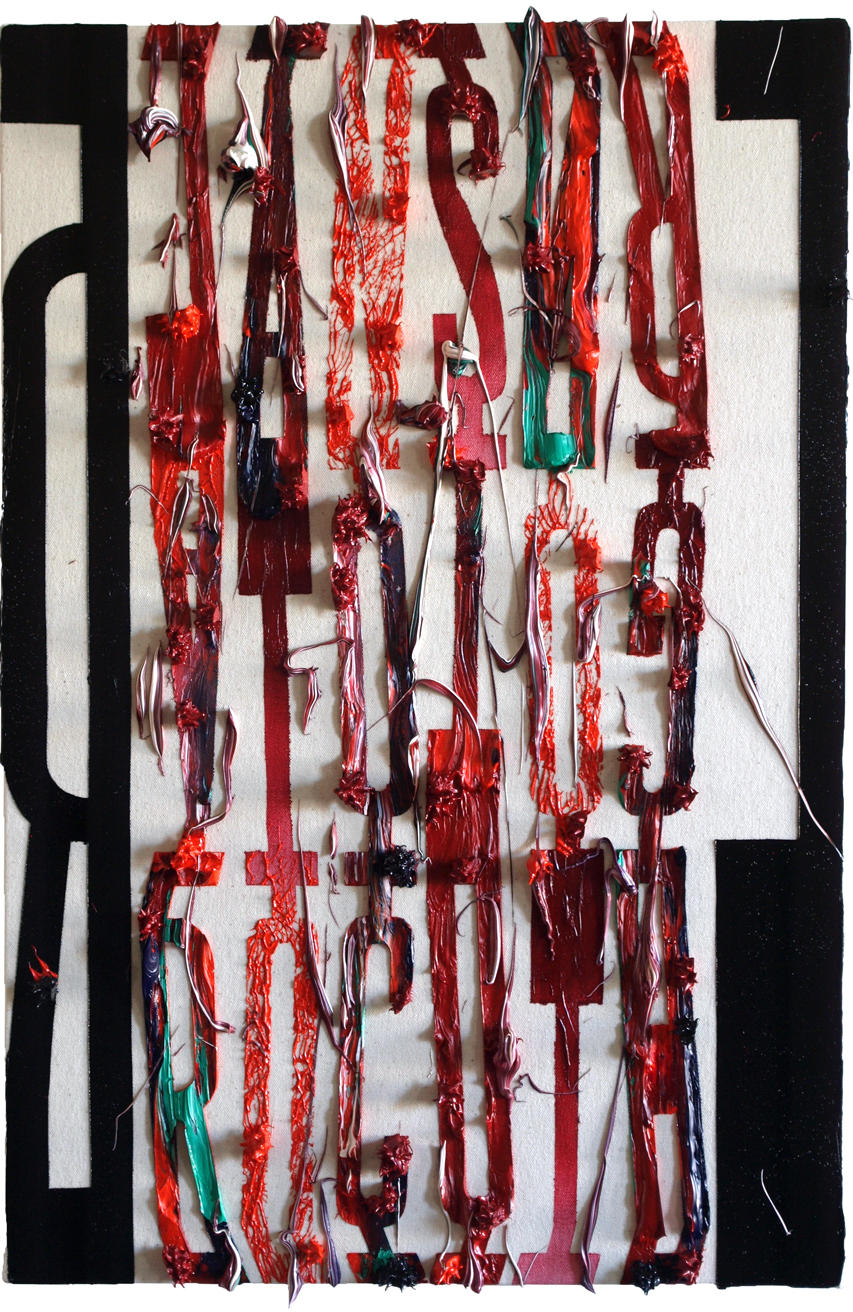
Don't Cry...
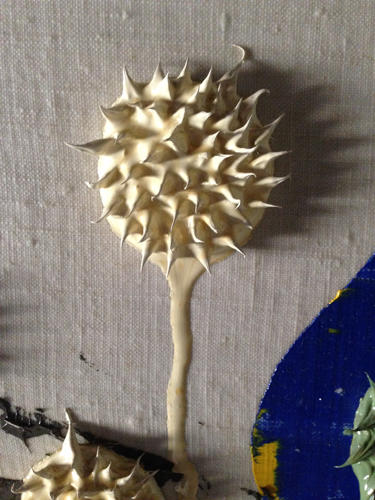
1. What's wrong?
2. Not feeling so good? Lachrymose?
3. I can dry your tears.
4. You must feel divided deep inside, lagrimas welling up over the years, finally spilling down your beautiful face.
5. You actually look kind of hot. Even more attractive than before. (I can relate to Picasso's take on his crying women... not the cause, but the effect.)
6. I can fashion a cup to catch your tears, like the paper cones that catch the dripping fat from curing ham hanging from Spanish ceilings.
